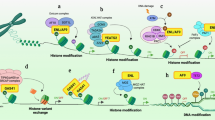Abstract
ADAM family consists of a number of transmembrane proteins that contain a disintegrin and metalloprotease domain. ADAMs are involved in a highly diverse set of biological processes, including fertilization, neurogenesis, myogenesis and inflammatory response. The ADAM proteins have both cell adhesion and protease activities.Adam22 is highly expressed in human brain. Theadam22-/- mice presented severe ataxia and died before weaning, but the function of ADAM22 is still unknown. 14-3-3 β interacting with ADAM22 was detected by using yeast two-hybrid assay. The specificity of interaction between ADAM22 and 14-3-3β was proved byin vitro binding assay and immunoprecipitation. The major 14-3-3β binding site was located in the last 28 amino acid residues of ADAM22 cytoplasmic tail. Protein 14-3-3β is abundant and plays an important role in mediating cell diffusion, migration and cell cycle control. The interaction of ADAM22 and 14-3-3β suggests that the ADAM22 may play a crucial role in neural function and development.
Similar content being viewed by others
References
Koji, S., Kazuto, Y., Yoshiharu, M. et al., Cloning and chromosomal map** of mouse adamll, adam22 and adam23, Gene, 1999, 236: 79–86.
Wrolfsberg, T. G., Primakoff, P., Myles, D. G., ADAM, a novel family of membrane protein containing a disintergrin and metalloprotease domain: multipotential functions in cell-cell and cell matrix interactions, J. Cell Biol., 1995, 131: 275–278.
Wrolfsberg, T. G., White, J. M., ADAMs in fertilization and development, Dev. Biol., 1997, 180: 389–401.
http://www.med.virginia.edu/~jag6n/adams.html
Koji, S., Yukio, O., Yoshikazu, H. et al., Metalloproteinase-like, disintegrin-like, cysteine-rich proteins MDC2 and MDC3: novel human cellular disintegrin highly expressed in the brain, Biochem, J., 1998, 334: 93–98.
Frederick, M. A., Roger, B., Robert, E. K. et al., Short Protocola In Molecular Biology, 3rd ed., 1997.
Fu, H., Romesh, R., Shane, C. et al., 14-3-3 Proteins: structure, function, and regulation, Annu. Rev. Pharmacol. Toxicol., 2000, 40: 617–647.
Xu, R., Cai, J., Xu, T. et al., Molecular cloning and map** of a novel ADAM gene (ADAM29) to human chromosome 4, Genetics, 1999, 62: 537–539.
Wang, F., Xu, R., Zhu, P. et al., Preliminary function analysis of a cloned novel human gene ADAM29, Science in China, Ser. C, 2001, 44(4): 392–399.
Santiago, C., Jose, M. P. F., Jose, M. L. et al., ADAM23/MDC3, a human disintegrin that promotes cell adhesion via interaction with the βV β 3 through an RGD-independent mechanism, Molecular Biology of the Cell, 2000, 11: 1457–1469.
http://cubic.bioc.columbia.edu/predictprotein/submitdef.html
Scidmore, M. A., Hackstadt, T., Mammalian 14-3-3β associates with theChlamydia trachomatis inclusion membrane via its interaction with IncG, Mol. Microbiol., 2001, 39(6): 1638–1650.
Zhang, S. H., Kobayashi, R., Graves, P. R. et al., Serine phosphorylation-dependent association of the band 4.1-related protein-tyrosine phosphatase PTPH1 with 14-3-3β protein, J. Biol. Chem., 1997, 272(43): 27281–27287.
Furlanetto, R. W., Dey, B. R., Lopaczynski, W. et al., 14-3-3 proteins interact with the insulin-like growth factor receptor but not the insulin receptor, Biochem. J., 1997, 327(3): 765–771.
Kosaki, A., Yamada, K., Suga, J. et al., 14-3-3β protein associates with insulin receptor substrate 1 and decreases insulin-stimulated phosphatidylinositol 3′ -kinase activity in 3T3L1 adipocytes, J. Biol. Chem., 1998, 273(2): 940–944.
Wang, Y., Jacobs, C., Hook, K. E. et al., Binding of 14-3-3β to the carboxyl terminus of Wee 1 increases Wee 1 stability, kinase activity, and G2-M cell population, Cell Growth Differ, 2000, 11(4): 211–219.
Van, P. C., Van, J. C., Ruurs, P. et al., 14-3-3 isotypes facilitate coupling of protein kinase C-zetato Raf-1: negative regulation by 14-3-3 phosphorylation, Biochem. J., 2000, 345(2): 297–306.
Han, D. C., Rodriguez, L. G., Guan, J. L., Identification of a novel interaction between integrin β1 and 14-3-3β, Oncogene, 2001 20(3): 346–357.
Author information
Authors and Affiliations
Corresponding author
Rights and permissions
About this article
Cite this article
Zhu, P., Sang, Y., Xu, R. et al. The interaction between ADAM22 and 14-3-3β. Sci. China Ser. C.-Life Sci. 45, 577–582 (2002). https://doi.org/10.1007/BF02879745
Received:
Issue Date:
DOI: https://doi.org/10.1007/BF02879745




